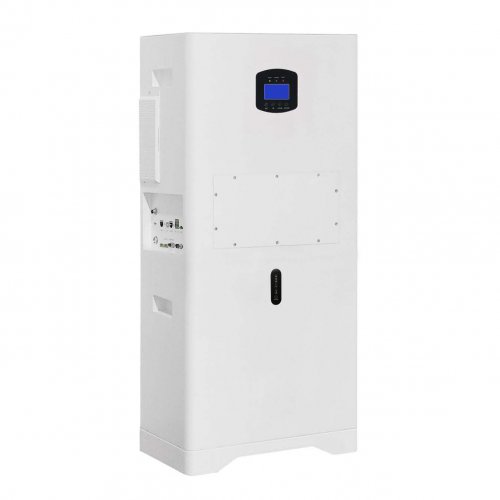How To Use Best Practices: A Comprehensive Guide To Operational Excellence
The term "best practices" is ubiquitous in the professional world, yet its true power is often misunderstood or underutilized. A best practice is not merely a good idea; it is a standardized, proven method or technique that has consistently shown superior results and is therefore used as a benchmark for achieving optimal performance. Effectively leveraging best practices is the cornerstone of efficiency, quality, and continuous improvement for any individual, team, or organization. This guide provides a structured approach to identifying, implementing, and refining best practices to drive tangible success.
Adopting a best practice is a deliberate process, not a random act. Following a structured methodology dramatically increases the likelihood of successful integration and desired outcomes.
Step 1: Identification and Research The first step is to clearly define the problem you are trying to solve or the process you wish to improve. Once the target area is identified, begin your research.Internal Analysis: Look within your own organization. Are there teams or individuals who consistently excel in this area? Document their methods. Often, internal best practices are the easiest to adopt because they already align with the company culture.External Benchmarking: Look outside your organization. Research industry leaders, academic publications, professional associations, and recognized standards bodies (e.g., ISO). Utilize case studies, white papers, and attend conferences. The goal is not to copy blindly but to understand the principles behind their success.
Step 2: Evaluation and Assessment Not every acclaimed "best practice" is suitable for your specific context. A critical evaluation is essential.Assess Relevance: Does this practice address your specific challenge? Will it work within your organizational structure, technological infrastructure, and company culture?Analyze Costs and Benefits: Evaluate the required investment in time, money, and resources against the potential return in efficiency, revenue, or risk mitigation. A practice might be "best" in theory but prohibitively expensive in practice for your situation.Identify Dependencies: Does implementing this new practice require changes in other areas? Understand the downstream and upstream impacts.
Step 3: Adaptation and Customization This is the most crucial step. A best practice should be treated as a framework, not a rigid script. You must tailor it to fit your unique environment.Modify for Fit: Adjust the practice to accommodate your team's size, skills, tools, and specific goals. The core principle should remain intact, but the implementation details can be flexible.Pilot Program: Never roll out a new practice across the entire organization at once. Select a small, controlled pilot group or project to test it. This minimizes risk and provides valuable real-world data on its effectiveness.
Step 4: Implementation and Integration A successful pilot paves the way for full-scale implementation.Develop Clear Documentation: Create standardized operating procedures (SOPs), guidelines, and checklists. This ensures consistency and clarity, preventing the practice from being diluted or misunderstood.Communicate and Train: Explain thewhybehind the change, not just thewhat. Employees are more likely to adopt a new method if they understand its benefits. Provide comprehensive training and ongoing support to ensure everyone has the knowledge and skills to succeed.Integrate into Workflows: Embed the new practice into daily routines and existing tools (e.g., project management software, CRM systems). Make it an inseparable part of how work gets done.
Step 5: Monitoring and Continuous Improvement Implementation is not the end. The environment is dynamic, and a best practice can become obsolete.Define Key Performance Indicators (KPIs): Establish metrics to measure the effectiveness of the new practice. Are you seeing the expected improvements in quality, speed, or cost?Gather Feedback: Regularly solicit feedback from the teams using the practice. They are on the front lines and will have the best insights into what is working and what is not.Review and Refine: Periodically review the practice against its KPIs and feedback. Be prepared to iterate and make adjustments. A true best practice culture is one of continuous refinement.
Focus on Principles, Not Just Procedures: Understand the underlying goal of the practice. This allows for smarter adaptation when unexpected situations arise.Secure Leadership Buy-in: Visible support from management is critical for motivating adoption and allocating necessary resources.Celebrate Successes: Recognize and reward teams and individuals who successfully adopt and benefit from the new practices. This reinforces positive behavior.Avoid "Best Practice" Fatigue: Do not try to change everything at once. Prioritize and focus on implementing one or two key practices at a time to avoid overwhelming your team.Blind Adoption: The biggest mistake is assuming a practice that worked elsewhere will work exactly the same for you without customization. Context is everything.Stifling Innovation: Treating best practices as immutable laws can kill creativity. They should be a foundation to build upon, not a cage that prevents finding newer, better methods.Ignoring Organizational Culture: A collaborative, open-source best practice will fail in a secretive, competitive internal culture. Ensure the practice aligns with or can adapt to your cultural norms.Assuming Static Excellence: The "best" practice today may be the "average" practice tomorrow. Commit to a cycle of regular review and be willing to abandon a practice that no longer serves its purpose.In conclusion, best practices are powerful tools for achieving excellence, but their power is unlocked only through a thoughtful and disciplined process of research, customization, implementation, and relentless refinement. By moving beyond superficial adoption and embracing them as a dynamic component of your strategy, you can build a resilient and high-performing operation poised for long-term success.
Customized/OEM/ODM Service
HomSolar Supports Lifepo4 battery pack customization/OEM/ODM service, welcome to contact us and tell us your needs.


HomSolar: Your One-stop LiFePO4 Battery Pack & ESS Solution Manufacturer
Our line of LiFePO4 (LFP) batteries offer a solution to demanding applications that require a lighter weight, longer life, and higher capacity battery. Features include advanced battery management systems (BMS), Bluetooth® communication and active intelligent monitoring.

Customised Lithium Iron Phosphate Battery Casing
ABS plastic housing, aluminium housing, stainless steel housing and iron housing are available, and can also be designed and customised according to your needs.

HomSolar Smart BMS
Intelligent Battery Management System for HomSolar Energy Storage System. Bluetooth, temperature sensor, LCD display, CAN interface, UART interface also available.


Terminals & Plugs Can Be Customized
A wide range of terminals and plugs can be customised to suit the application needs of your battery products.

Well-designed Solutions for Energy Storage Systems
We will design the perfect energy storage system solution according to your needs, so that you can easily solve the specific industry applications of battery products.



About Our Battery Cells
Our energy storage system products use brand new grade A LiFePO4 cells with a battery lifespan of more than 4,000 charge/discharge cycles.



Applications in Different Industries
We supply customized & OEM battery pack, assemble cells with wiring, fuse and plastic cover, all the cell wires connected to PCB plug or built BMS.
Applications: E-bike, Electric Scooter, Golf Carts, RV, Electric Wheelchair, Electric Tools, Robot Cleaner, Robot Sweeper, Solar Energy Storage System, Emergency Light, Solar Power Light, Medical Equipment, UPS Backup Power Supply.
We can provide you with customized services. We have the ability to provide a vertical supply chain, from single cells to pack/module and to a complete power solution with BMS, etc.


HomSolar (Shenzhen) Technology Co., Ltd
























